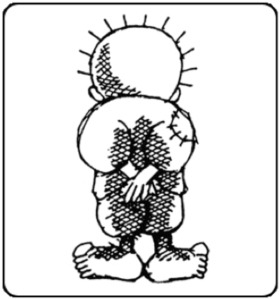As promised I am going to go into more detail about the meetings that I had in DC at the National Council on June 21st.
From Dr. Anthony’s opening remarks, I was surprised by his comment that the Lebanese lack empathy. He believes this is why there is conflict in the area because people are not able to put themselves in the other person’s shoes. Obviously this is not true for everyone, but it seems to be one factor.
I learned that the Shia in Iran look up to the Shia in Lebanon. Also Saudi Arabia pushed for greater representation of Shia in Lebanon because of security and stability. Security and stability are the key terms of the day.
I can’t say enough how interesting Miriam’s presentation was on the Palestinian refugees in Lebanon. She has focused on getting past the generalities and looking at why the situation is the way it is. Personal and unique experiences are the also important to her in her research. There are approximately 455,000 registered refugees and 12 camps in Lebanon. However, not all refugees are registered. You are only allowed to be a registered refugee if you left pre-1948 or are a direct descendant of someone who did. I was surprised to learn that not all refugees have the same socio-economic status. Some never live in camps and are actually quite well off, although this is certainly a minority. Also Miriam pointed out that the stereotype is that all refugees are miserable in the camps and want to leave. According to Miriam most refugees have turned the camps into their homes and therefore are very attached to them.
The issue with the Palestinian refugees in Lebanon is that the balance between Christians and Muslims is so delicate. Giving citizenship to the 455,000 mainly Sunni Muslim Palestinian refugees would tip the scales in favor of the Muslims because the population of Lebanon is small, less than 4 million. Interestingly from 1950-1960 all of the Christian Palestinian refugees were naturalized, approximately 50,000 at the time. Then later in 1994 all of the Shia Muslim Palestinians were naturalized. However, the Sunni Muslims have been ignored all the time.
Another issue for the refugees is that they can not work in Lebanon for the most part. In 1961 the Law of Reciprocity became the primary labor law and it said that only citizens of countries with work exchanges with Lebanon are allowed to work here. However, the Palestinians have no country to make this sort of exchange with and therefore they are not allowed to work here.
Pre-Civil War, circa 1968-1982, the 1969 Cairo Agreement said that Palestinians can do whatever they want in the camps. The PLO created jobs and built up their militia. However, after the Civil War, everyone in Lebanon blamed everything on the Palestinians in order to recover from the war. This negative attitude towards refugees still exists today.
From 1991 to present has been the rise of the NGO. There are two types of NGO’s active in Lebanon: relief work and memory preservation. The major policy issue in Lebanon that is currently debated is that women can’t pass their citizenship/nationality to their children in Lebanon. I am very interested in this issue since my focus next year will be on women in the Middle East.
The cartoon is called Handala by Naji Ali. Miriam said that he represents the Palestinian refugee and you never see his face.

Pingback: Guide to Lebanon Blog Posts « Laura's Adventures